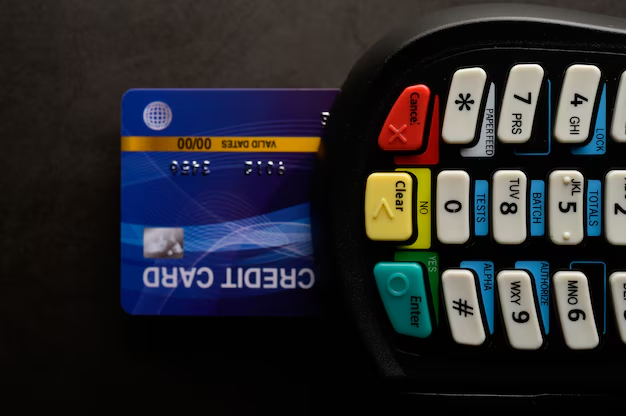Unveiling the Details: How Many Digits Are on an Amex Card?
If you've ever held an American Express card, you may have noticed that it stands out from other credit cards in more ways than one. From its distinct look and unique features to the experience it offers, American Express, commonly known as Amex, has carved out a notable spot in the financial world. But one aspect of Amex cards that often piques curiosity is the number of digits on the card. It may seem like trivia to some, but understanding this can shed light on the identity, security, and functionality of your card.
Why Amex Cards Are Different
American Express, unlike most other credit card issuers, is both a card issuer and a payment network, which allows for a distinct level of control over its products. Most credit cards, such as Visa and MasterCard, are issued through banks and operate on an external payment network. This dual role played by Amex gives them a unique edge and influences many of their choices, including the design and security features of their cards.
Amex Card Digits: The Basics
💳 Amex cards have 15 digits. This is different from the typical format used by Visa and MasterCard, which usually feature 16 digits. Here's a breakdown of the Amex card number structure:
- The First Digit: The card number begins with a "3." This digit identifies the card network as belonging to American Express, indicating that it's part of the "Travel and Entertainment" category.
- The Second Digit: This digit is either "4" or "7" and is used within Amex for more specific categorization.
- Account Identifiers: The next range of numbers signifies the account identifiers, specific to the cardholder’s account.
- Security Feature: Finally, this 15th digit acts as a check digit which is used to validate the card number.
The Importance of Fewer Digits
While one less digit might seem arbitrary, it has practical implications. Amex's structure supports ease of memorization for travel and entertainment purposes, which aligns with their origin and primary focus. The 15-digit structure also facilitates easier integration with Amex’s proprietary systems, enhancing security and fraud detection capabilities.
Exploring Amex Card Features
American Express cards are famed for various exclusive features that accompany their unique 15-digit advantage. Here are some that stand out:
- Enhanced Security: With a robust fraud detection algorithm, the integration of fewer digits allows for intricate cross-verification unique to Amex.
- Premium Concierge Services: Holders enjoy tailored services for travel, dining, and lifestyle events.
- Reward Programs: Though varying by card type, Amex is known for its competitive points and cashback programs.
How Amex Differs in Security
American Express takes its security components seriously, and the unique card number structure plays a crucial role in this regard. Amex cards feature advanced techniques like the CVV (Card Verification Value) and zip-code verification for an added layer of protection against unauthorized transactions. The 15-digit configuration feeds into their proprietary fraud systems developing a targeted approach towards keeping transactions safe, particularly advantageous given the high spend made on many Amex cards.
Related Questions: An Overview
Why Does Card Digit Count Matter?
One may think, "Why care about the number of card digits?" However, the count impacts more than aesthetic and memorization. It addresses technological limitations, implementation of card features, and system processing efficiency. For users specifically, it contributes to security, which is paramount in today’s digital landscape.
How to Identify an American Express Card
Aside from counting digits 🚀, a quick identifier of an American Express card is the front-positioned CID (Card Identification Number). Unlike other cards that place the CID on the back, Amex stamps its identifiers boldly on the front of the card.
The "3" Prefix: Unveiling Global Patterns
Initiating with a "3," American Express shares this starting digit with several other card types under different networks, albeit marked exclusively by following numbers (44 or 47). It highlights a broader global capacity among Travel and Entertainment cards, pegging Amex within a specialized international category.
Quick Reference Guide: Amex Card Features
Below is an easy-to-skim guide presenting key features and takeaways for Amex cards:
💳 Card Structure
- Total of 15 digits
- Begins with "3"
- Specific identifiers for enhanced security
🔒 Security & Protection
- Strong fraud detection measures
- Proprietary algorithms for transaction monitoring
🥇 Exclusive Services
- Offers luxury travel, dining, and concierge benefits
- Includes reward programs and points
🛡️ Recognition
- Front-facing CID
- Distinct prefix indicating global acceptance
Amex in the Wider Context
American Express, with its fewer digits, stands as a testament to their focused blend of tradition and innovation. This setup, reflective of Amex's standard of bold individuality, extends from their card number format to service delivery and global recognition.
As financial transactions and credit systems evolve, elements as seemingly minor as the digit count on a credit card play a role in assembling a broader, more secure, and user-friendly financial environment. Knowing these differences in your Amex card positions you to fully leverage its potential, ensuring your financial experiences are as rewarding and secure as possible. So the next time you reach into your wallet, take a glance at that American Express card and appreciate the distinctiveness that a single digit less can offer.

Related Topics
- Can a Non Frequent Traveler Benefit From Amex Platinum
- Can Amex Points Be Transferred To United
- Can I Access Delta Sky Club With Amex Delta Card
- Can I Cancel Amex Card Online
- Can I Do Wire Transfer With Amex Saving
- Can I Earn Points On My Corporate Amex
- Can I Pair Up Amex Platinum And Delta Skymiles Together
- Can I Pay Rent With Amex Gold Card
- Can I Put My Amex Platinum On Hold
- Can I Transfer Amex Points To American Airlines